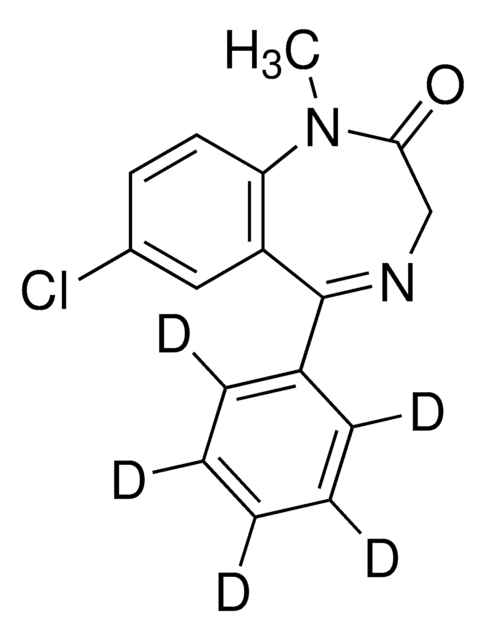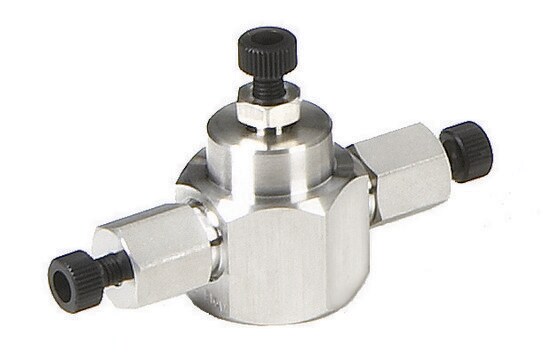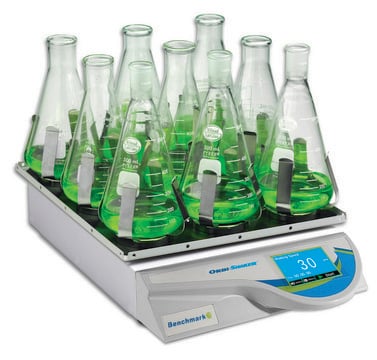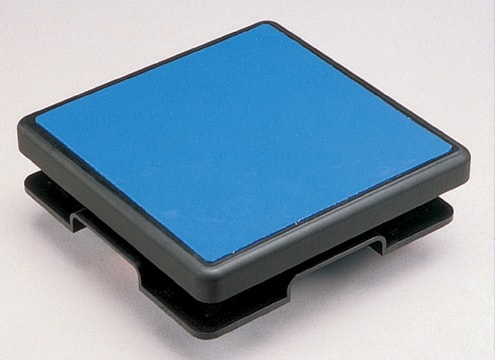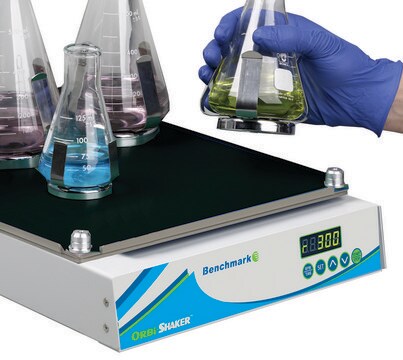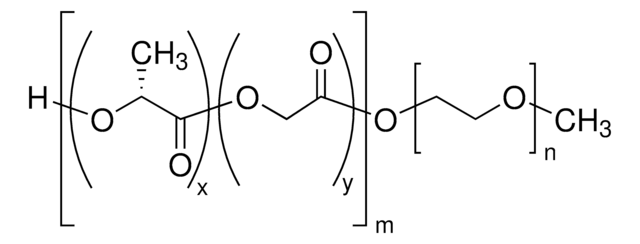推荐产品
形狀
liquid (dispersion)
包含
p-toluenesulfonate as dopant
成份
Biotron PP polymer, 0.3-0.7 wt. %
ethanol, 4-8 wt. %
nitromethane, 90-95 wt. %
濃度
0.3-0.7 wt. % (dispersion in nitromethane)
傅導性
10-40 S/cm (bulk)
一般說明
Average transmittance: 70-90%
Biodegradble conducting polymer for bomedical applications. PCL diol blocks have average molecular weight 2000 and PPy block have an average molecular weight of 4000 with a 25% doping level. Good biocompatibility with expected weight loss of 40% at 200 days in pH=7 buffer.
應用
特點和優勢
注意
其他說明
法律資訊
訊號詞
Danger
危險分類
Acute Tox. 4 Inhalation - Acute Tox. 4 Oral - Carc. 2 - Flam. Liq. 2 - Repr. 2
儲存類別代碼
3 - Flammable liquids
水污染物質分類(WGK)
WGK 2
閃點(°F)
66.9 °F
閃點(°C)
19.4 °C
其他客户在看
Biomedical Applications
商品
The application of conducting polymers at the interface with biology is an exciting new trend in organic electronics research.
Optoelectronic devices such as light-emitting diodes (LEDs), solar cells, and light-emitting field effect transistors (FETs) that utilize organic materials as their light harvesting and/or charge transporting component have been the subject of much academic and commercial attention.
While dye sensitization as the basis for color photography has been accepted for a very long time,1 attempts to use this principle for the conversion of solar light to electricity generally had resulted only in very low photocurrents, below 100 nA/cm
Professor Chen (Nankai University, China) and his team explain the strategies behind their recent record-breaking organic solar cells, reaching a power conversion efficiency of 17.3%.
我们的科学家团队拥有各种研究领域经验,包括生命科学、材料科学、化学合成、色谱、分析及许多其他领域.
联系技术服务部门